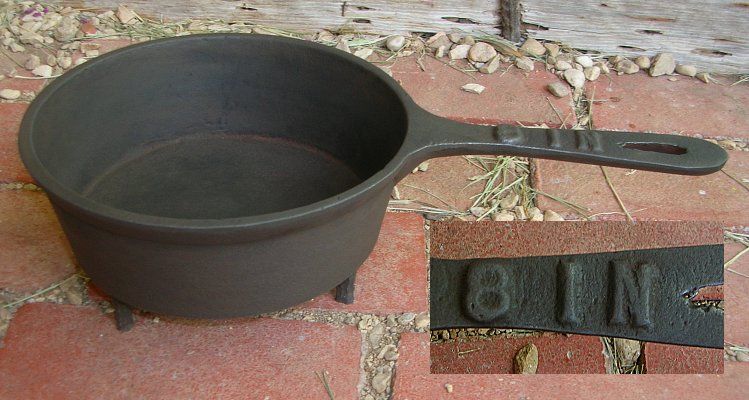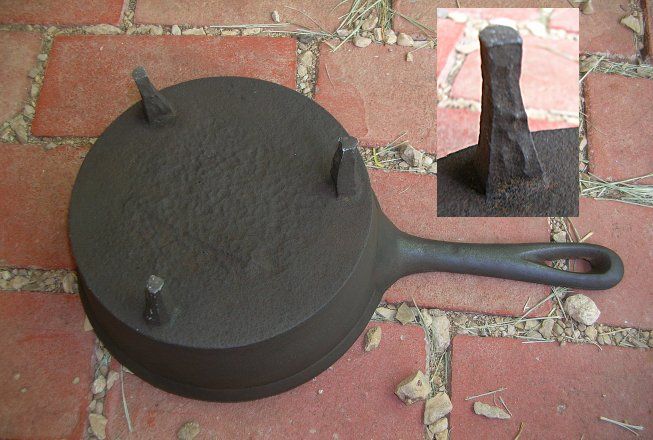Blake Awbrey
New member
This is the first piece I experimented with in the electrolysis tank I built using the directions from this site. I did this one first because it was the most corroded and rust covered piece I had. I wish I had taken a before picture to go with the pictures of it below showing it after bathing in the tank. The difference is unbelievable though there is some pitting.
The Posnet measures 7-3/4" across at lip, the lip is 1/4" thick and the handle measures 6" long from the outside of the lip. The handle is embossed with "8 I N" in 1" high symbols. The body of the piece measures 2-5/8" tall from lip to bottom and the legs are 1-1/2" tall for a total of 4-1/8" in height from the lip to the surface on which you set it.
The legs are odd in that they are crudely made yet 6 sided. The side facing inward is one large flat side then the outward facing portion of the legs is made of 5 equal angled flat edges.
Here are some photos with detail insets:


The only markings on the piece are the "8 I N" on the handle. I would deeply appreciate any information about this Posnet especially as to the maker, age and if possible value.
Thank you for your time and help.
Sincerely, Blake
The Posnet measures 7-3/4" across at lip, the lip is 1/4" thick and the handle measures 6" long from the outside of the lip. The handle is embossed with "8 I N" in 1" high symbols. The body of the piece measures 2-5/8" tall from lip to bottom and the legs are 1-1/2" tall for a total of 4-1/8" in height from the lip to the surface on which you set it.
The legs are odd in that they are crudely made yet 6 sided. The side facing inward is one large flat side then the outward facing portion of the legs is made of 5 equal angled flat edges.
Here are some photos with detail insets:


The only markings on the piece are the "8 I N" on the handle. I would deeply appreciate any information about this Posnet especially as to the maker, age and if possible value.
Thank you for your time and help.
Sincerely, Blake
